The Queen’s Step Well : Rani Ki Vav-Patan,UNESCO World Heritage Site
After visiting Modhera Sun temple, we headed towards Patan, the city well-known for its Patola Sarees. I was excited as my wait was about to over to visit this beautiful place which is famous for Patola and UNESCO World heritage site- Rani ki Vav ,Patan.
There are several UNESCO World Heritage Sites in India which attracts so many travelers from all over the world. Rani Ki vav ,Gujarat OR Queen’s step well is also an amazing piece of architecture and history of that glorious era of Gujarat.

Rani Ki Vav,Gujarat History:
Rani Ki Vav is an intricately constructed step well situated at Patan,Gujarat in India. It is located on the banks of Sarswati River; built by queen Udaymati as memorial to king Bhimdev in 11th century A.D. The sight was added as UNESCO world Heritage site in 2014.
Step wells of India are a distinctive form of subterranian water resource and storage systems on the Indian subcontinent, and have been constructed since the third millennium BC. The Vavs of Gujarat are not merely sites for collecting water and socializing, but also hold great spiritual significance. Originally, they were constructed quite simply, but became more intricate over the years, perhaps to make explicit the ancient concept of the sanctity of water with the addition of carved stone deities.
As like Modhera Sun temple, Rani ki vav also built-in the complex Maru- Gurjara architectural style, reflecting mastery of this complex technique and great beauty of it in detail and proportions. It is designed as an inverted temple, where one steps down various levels to the water; further divided into seven levels of stairs with sculptural panels of high artistic quality.

Ornate Step Well:
As we entered in the Complex; it was a huge manicured lawn area and one could not see the step well from the entry gate. We purchased ticket from the Counter and started walking towards Step Well. The complex is clean and well maintained place.
As we reached near the step well; we found a huge hole like construction below the ground. It was magnificent and breathtakingly beautiful in every term. It is east facing step well measuring 64 m long, 20 m wide and 27 m deep. You can imagine how large structure it has!!!

As you keep going down, beauty of the step well starts revealing step by step. You can see the sculptures and carvings on the side wall and pillars. It becomes more and more ornate as you reach downwards. The lower level has more intriguing stone work I have ever seen.
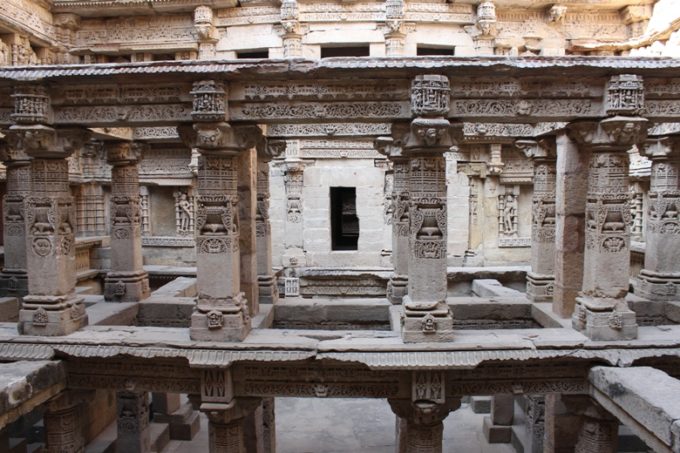
There are more than 500 principle sculptures and over a thousand minor ones combine with religious, mythological and secular imagery works on the side walls of step well.

The most significant sculptures which is on central level are in devotion to lord Vishnu in the forms of Dus avtars- Kalki, Rama, Krishna, Narsinh, Vaman, Varahi and others representing their return to the world. They are accompanied by Nagkanya (serpent women),Yoginis (female yoga practitioners), Apsaras (heavenly dancers). Interestingly, sculptures of Apsaras showcasing 16 different styles of make-up to look more attractive called Solah – shringar.

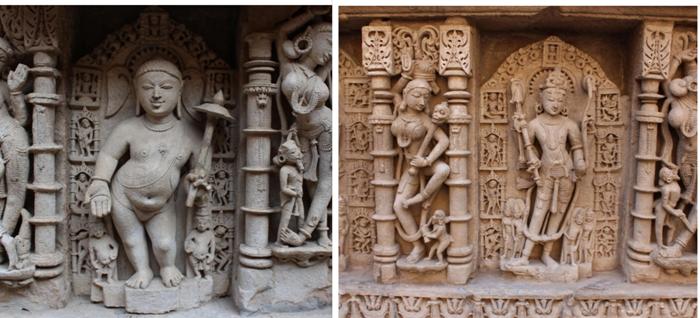
As you reach extreme downwards, you will lead to foundation floor of the Vav. At water level, you will see a carving of Vishnu reclining on one thousand snake heads.

There is also a small gate below the last step of the step well, with a 30 Km tunnel which is blocked by stones and mud that leads to the town of Sidhpur near Patan. It is said that it was used as an escape gateway for the king, who built the step well in the times of defeat.
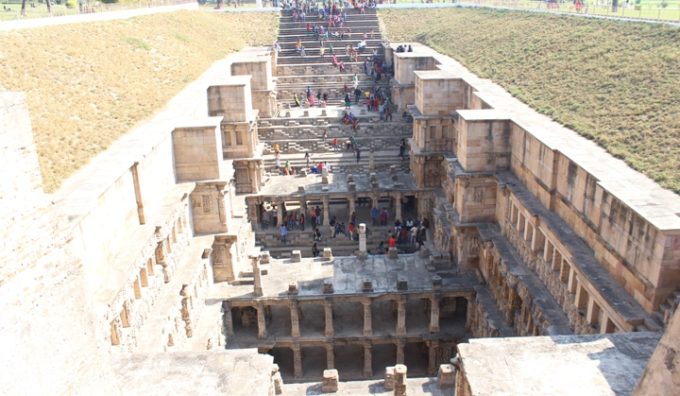
You can view the deep well from the top by walking around the structure. The well is too richly carved.

After looking at these structures, it looks like one of the finest specimens of its kind that was available in 11th century. Being one of the largest structures; befitting its name, the Rani-Ki-Vav is now considered to be the queen among step wells of India.
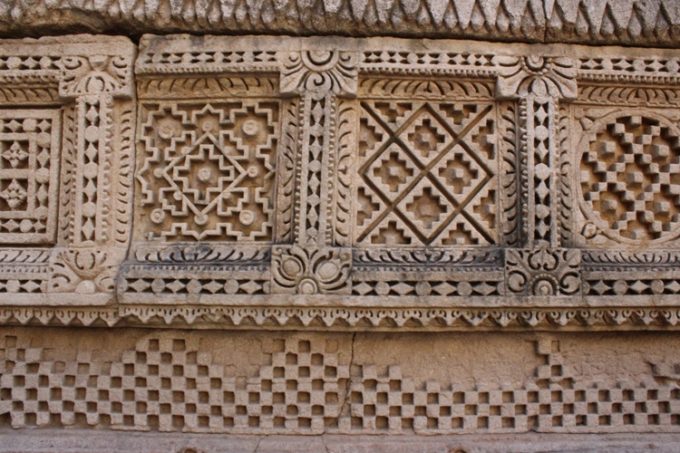
After visiting Rani ki Vav we started towards another prominent site Sahstraling Talav; located few meters from Rani ki Vav. It is an artificial water storage tank constructed by king Sidharaj Jai Singh in the late 11th century. Like Rani ki vav, the architecture represents the integration of water management structure with the sanctity of water.

The tank used to receive the water from a canal of river Sarasvati river. The name ‘Sahasralinga’ mean ‘thousands of lings’ that were constructed on the edge of the tank, but today not a single shiva ling can seen. Thus it is perfect amalgamation of design for water conservation and reflection of the Hindu spirituality.
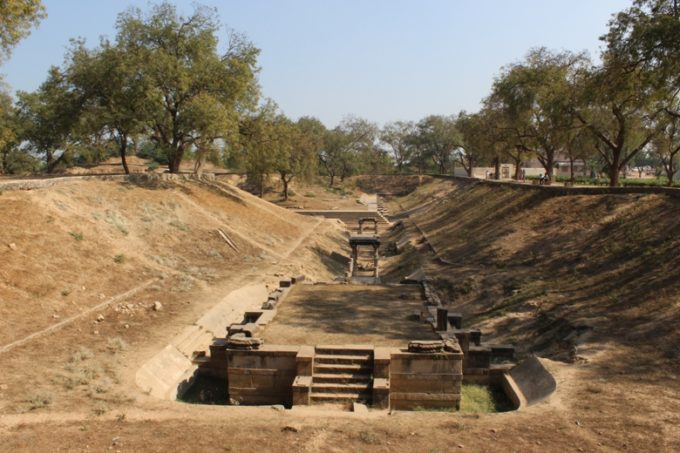
As you walk towards structure, you can see that parts of tank are buried in the sands of the river. It just remains a ruin today. As you reach the end of boundary, you can see the circular step well with steps. It more looks like amphitheater stage. The step well links to channel which at the end connects to temple. But in recent times, you cannot find any temple; but you can admire the grandeur of this great water tank.
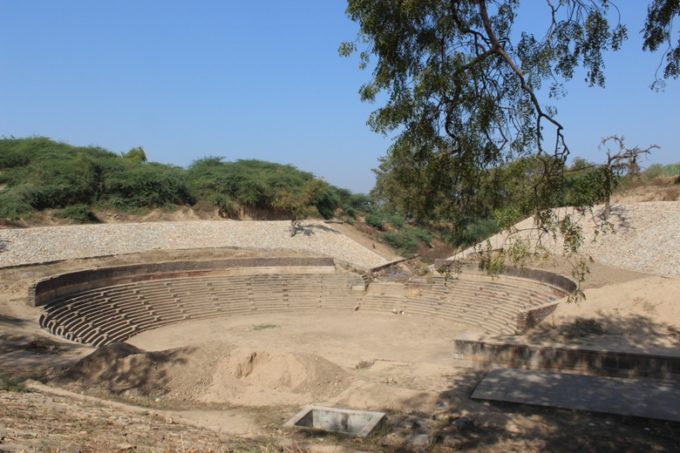
How to Reach Patan :
Patan is well-connected by Road with Ahmedabad[Major city 126 Kms away].Alternately you can take a train to Mehsana from Ahmedabad and then bus ride to Patan [54 kms from Mehsana]. GSRTC buses has good frequency.
Where to Stay in Patan:
If you are planning to stay at Patan; I suggest to stay at Hotel Navjivan near siddhpur Highway- 10-15 from the city. It is clean and comfortable budget stay option [INR 800-900/night]
Travel Tips::
If you are looking for Places to Visit around Ahmedabad for a Day; Rani Ki Vav in Patan is Perfect along with Modhera. If you have 2 days, consider visiting Siddhpur near Patan.
Save this post , Pin it!!

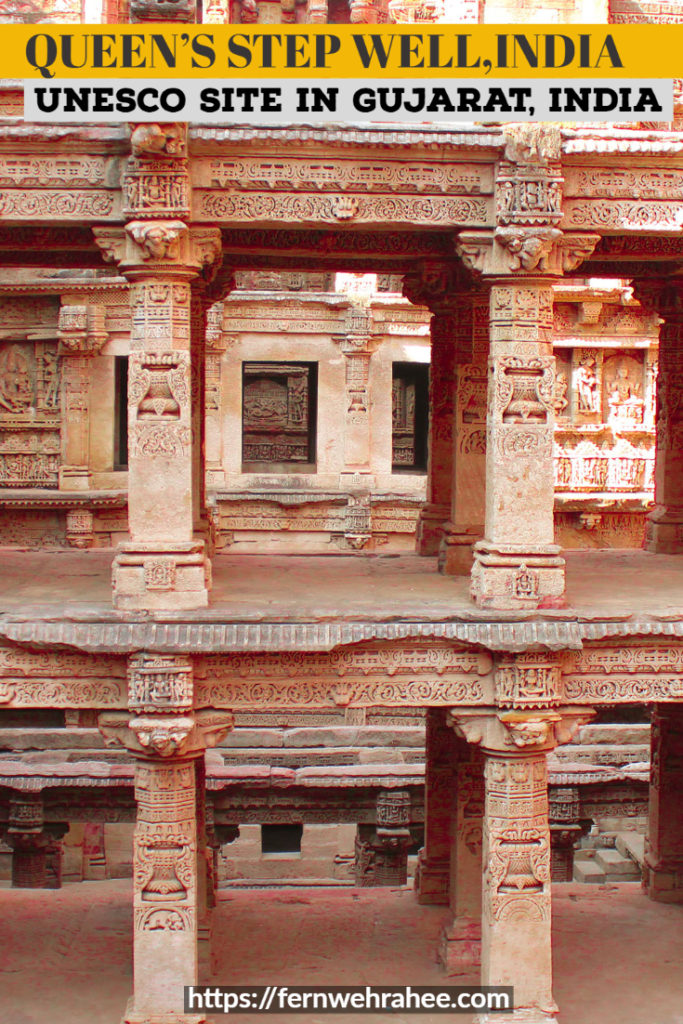


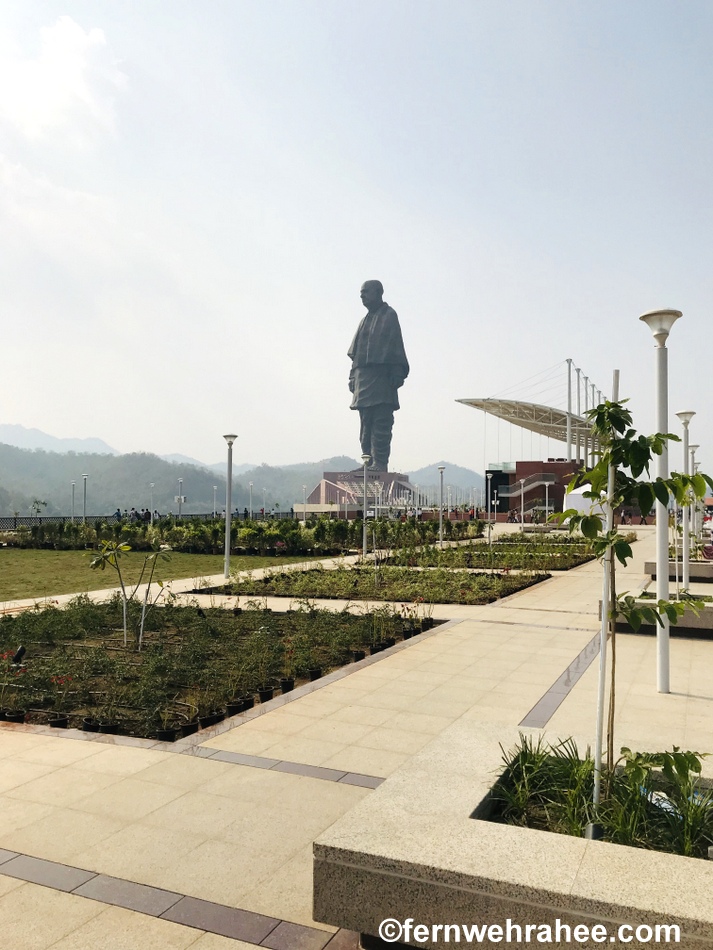

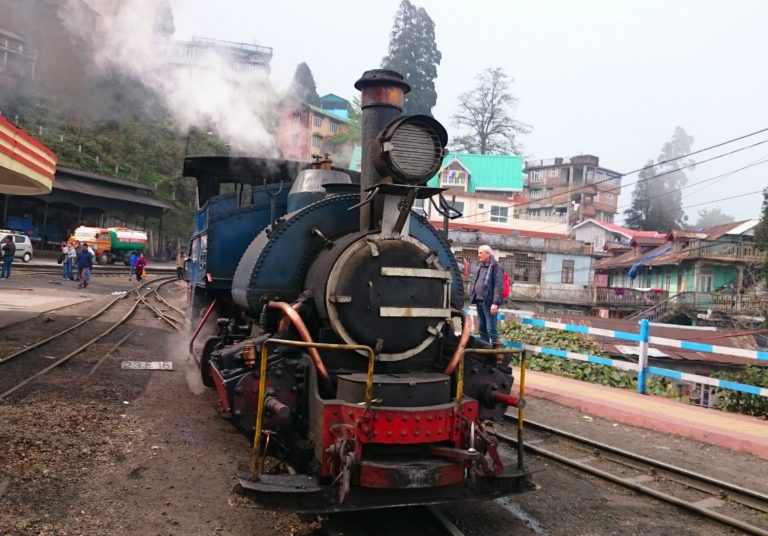



Such beautiful and intricate work! Each figure has a story and can be interpreted in so many different ways. I could spend days here photographing it in so many different ways. Lovely documentation.
Thank you Ketki. You are right, one can spend whole day here to photograph the sculptures.
I didn’t even know this existed! The design is so intricate and just so beautiful 😍
Yeah Lizzie its so beautiful.I can spend whole day here!!! Its UNESCO world heritage site 🙂
stunning your all pictures and article too really nice thanks for sharing n keep it up thanks a lot…!
Thank you so much 🙂
Both of us are writing about stepwells! I am lucky, I too have been to Rani ki Vav! You have captured it beautifully!
Yes,I love visiting step wells too.And thank you so much for your words mam;made my day 🙂
Nicely written, Mayuri 🙂 I’ve been planning to visit Rani ki vav for long time now. Though I visited Chand Baori Stepwell in Rajasthan last year and can imagine the grandeur of Queen’s Stepwell in Gujarat.
Thank you Anjali, my love for step wells is never ending 🙂
Glad to read this post, you have been to very nice and beautiful place. I have heard about this place very much and want to visit this place.
Thank you, glad to hear that.
Another stellar discovery from u . Honestly I know almost nothing abt West India and its history . You are just kicking in my waderlust goals of visiting Gujarat sometime soon ..
Thank you Debjani. You must visit it once to capture the beauty and I can guide you in planning your trip here.Hope you can visit here soon
I was in awe of this monument and I am not kidding when I first saw the carvings I was stunned! To think that all this was hidden from human eyes and buried deep down 🙂 It is indeed very stunning! Well captured 🙂
I had spent half day at the step well to capture its beauty as I was also amazed to see how it has made.
Thank you for appreciation Divyakshi, made my day 🙂
Stunning your all pictures and article too really nice thanks for sharing n keep it up thanks a lot !
Thank you so much
Had no idea about this monument, I’m constantly surprised by sheer volume of amazing historical monuments across India. Really enjoyed reading about Rani Ki Vav Patan and your photos showing the ornate detail and beauty. Good to learn about the mastery of water shown by builders as well.
Thank you so much.
I can see why Rani ki Vav is a UNESCO site. I love the intricate carvings, and the entire complex looks to be in such good conditions. Even with all the stairs, it looks like ti would be relatively easy to get around.
Yeah Its very well maintained place and you can easily walk around.Must visit when you happen to be in India.
I’ve never heard of Rani Ki Vav-Patan but those stone carvings are amazing! India has so much to see so I’m disappointed I’ve only been able to go to Mumbai!
Thank you.Hope you visit here soon
This place is a photographer’s delight… It’s extremely difficult to take bad photographs of this place…
And yes extremely well written article…